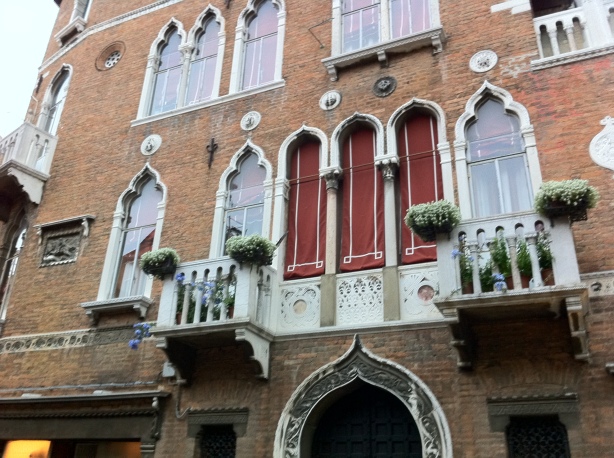So what of the rich and dense built fabric of coloured masonry buildings built on long, long timber piles? I carried only one (non-E) architectural book with me; Steen Eiler Rasmussen’s “Experiencing Architecture” (1959). SER really did help me to experience architecture on my trip. This sensible, bookish, sometime expatriate, Danish Anglophile has his own stubborn and peculiar view.
 Monks passing St. Marks
Monks passing St. Marks
He looks at the the rich, exotic facades of the buildings that line the Grand Canal and sees Turkish carpets. I didn’t see that. But I am willing to go along with him, because he is such an winning and amiable guide.
He sets the scene “Venice itself looms like a mirage, a dream city in the ether….coloured phantoms of buildings…when every self- respecting town was surrounded by….. impregnable fortifications.. the first impression of this metropolis must have been of an earthly paradise where fear was unknown…graceful arcades swarming with carefree people… large, lively market places opened out towards the sea”. Perhaps he is a little too imaginative there, but his heart is in the right place.
 “Here the Orient began, but a transfigured Orient, an idealised Orient.”
“Here the Orient began, but a transfigured Orient, an idealised Orient.”
SER points out that it was traditional to hang your rugs or carpets out the window, to decorate the facade. And that the facade designs are “attempts to make that festive array permanent. The mosaic floors in St. Mark’s are really costly carpets fashioned of coloured stones.”
And its facade is chequered in white and red.
“at the corners are twisted columns .. .so thin that they are no longer supporting elements but simple edgings like the cord upholsterers use to hide seams”.
Thank you Steen Eiler.

i think you would enjoy adrian stokes on venice…